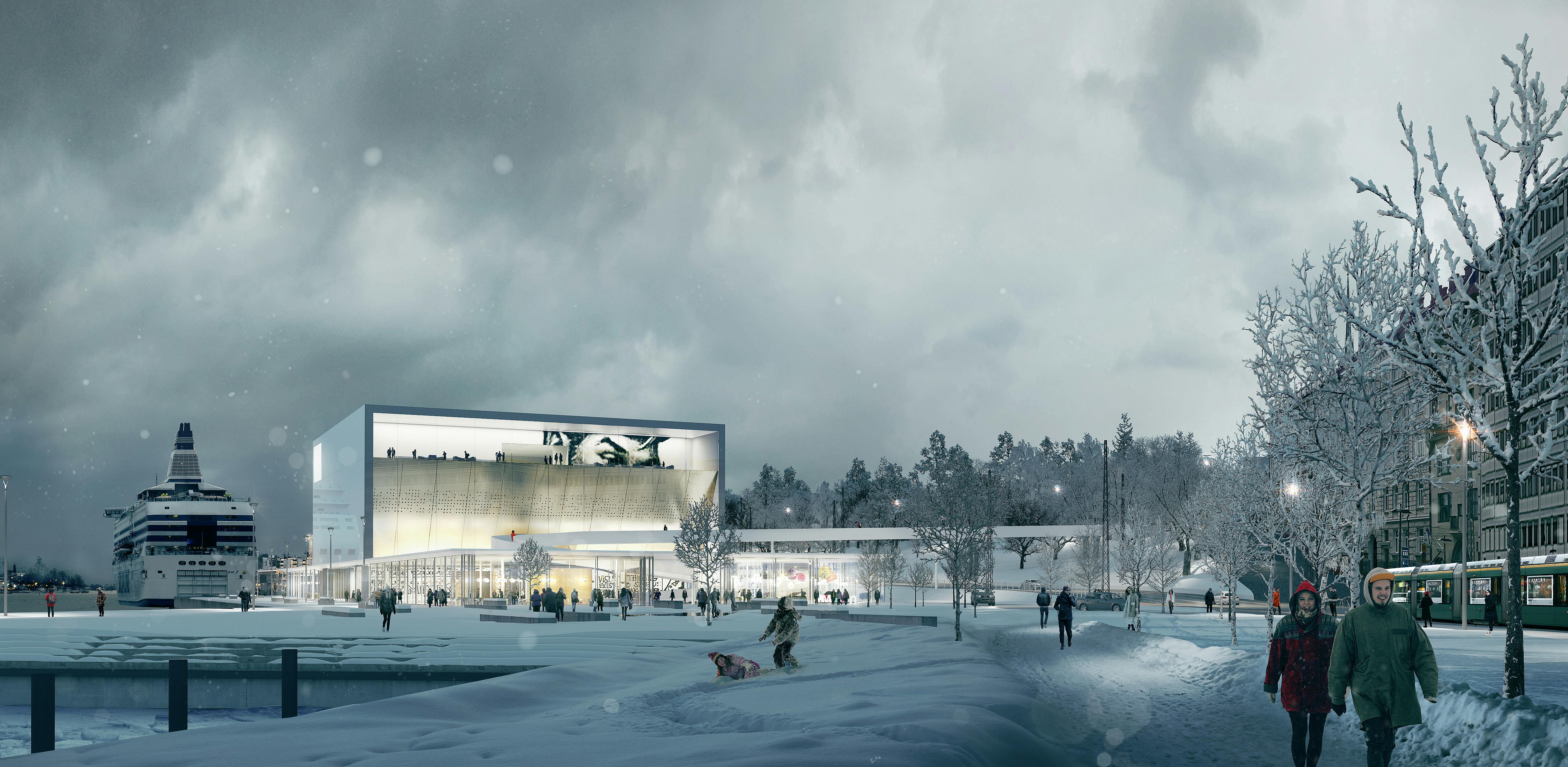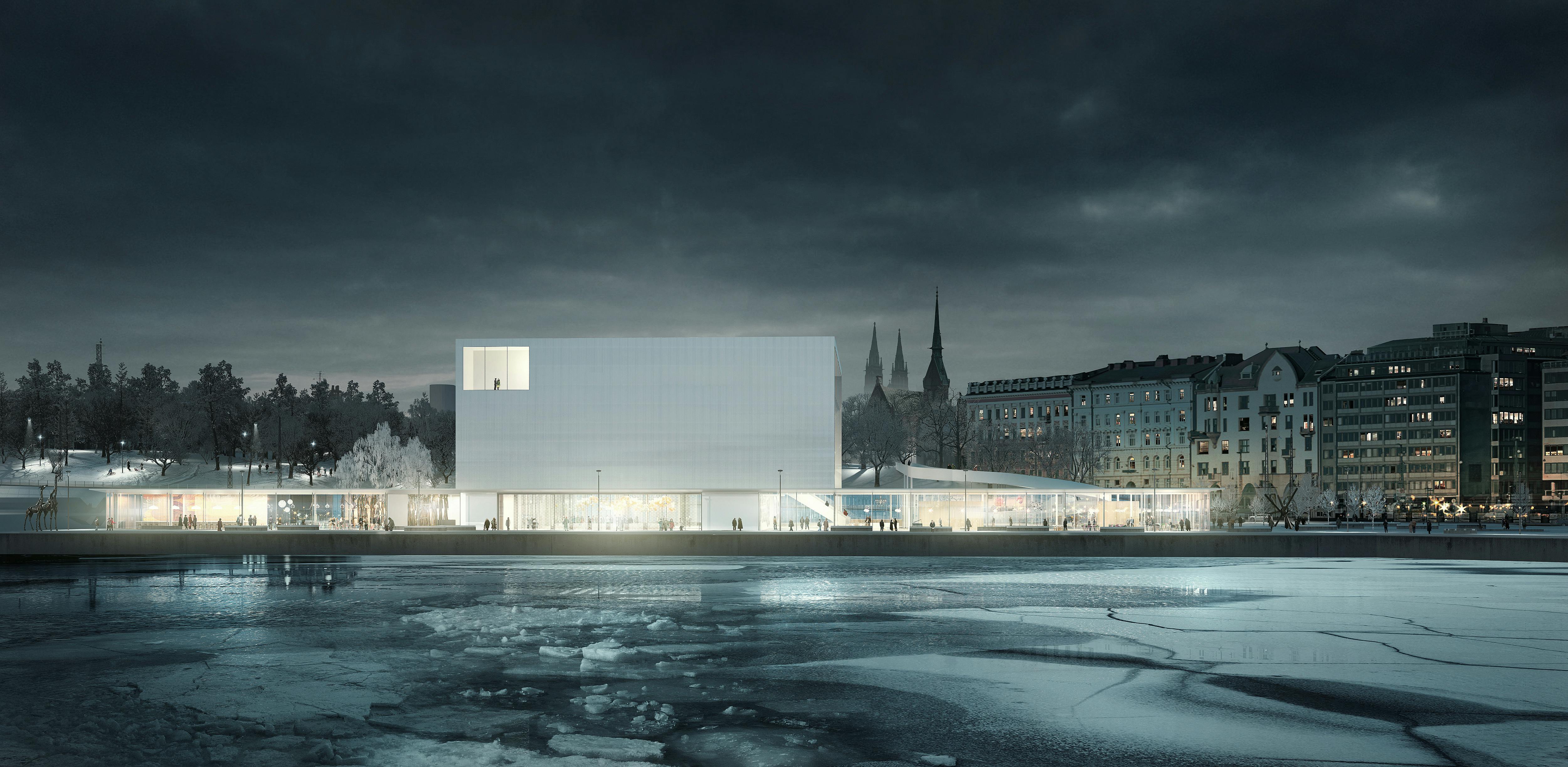Guggenheim Museum
Helsinki
Rather than catering to the traditional idea of the art museum as a confined object, Guggenheim must seek to reverse this idea of the aloof, self-referential container of art. By creating an open, transparent and responsive structure, Guggenheim can engage in and capture the essence of Helsinki culture and city life. We propose a new Guggenheim model that not only builds upon its international competence and collections of art, but actively responds to and engages in its local and cultural context: Not as a Guggenheim in Helsinki, but a Helsinki Guggenheim.


Type
Architecture
Status
Competition proposal
Team
Espen Røyseland, Øystein Rø, Margrete Bjone Engelien, Filip Loguin, Hans-Christoph Schultz
Conceived as an urban mediator, Helsinki Guggenheim engages in and re-activates the urban systems and qualities of the site. A new pathway is established, across the E75, linking the park and the southwestern part of Helsinki to the waterfront promenade and main entrance of the Guggenheim museum. The promenade and urban qualities of the site is strengthened by elevating the main exhibition spaces in a climate-controlled box above ground floor; leaving all open and interactive programs located along the waterfront and north-facing facades.
Helsinki Guggenheim proposes a transparent and open structure that humbly integrates in the city and opens up for new interpretations on the museums role and how it operates. The ground floor is conceived as a continuous open space, connecting all of the museum’s functions and programs. Furthermore, all programs are equipped with separate entrances, providing flexibility to autonomous use beside standard opening hours. A separate row of multipurpose spaces, adjacent to the exterior garden, are proposed for guest workshops, exhibitions or programs by external, local cultural institutions or artists.
Helsinki Guggenheim seeks to avoid the architectural omnipresence of the conventional museum. Choosing performance over form and essence over representation, the museum building claims a radical stance on its own typology. Presenting a simple, yet precise geometry, allowing for great flexibility in use, the building advocates an attitude of letting its content and activities define the spaces, rather than the other way around. Lightness in materiality and expression enhances the museum’s message of openness and transparency. A large reflective inner façade mirrors the interior activity of the museum to the city, and the city skyline to the museum lobby; stating the building’s coherence with its context.
Celebrating a contrast of scales the building combines the architectural opposites of the intimate garden pavilion and the spatial grandness of high ceiling exhibition hall.